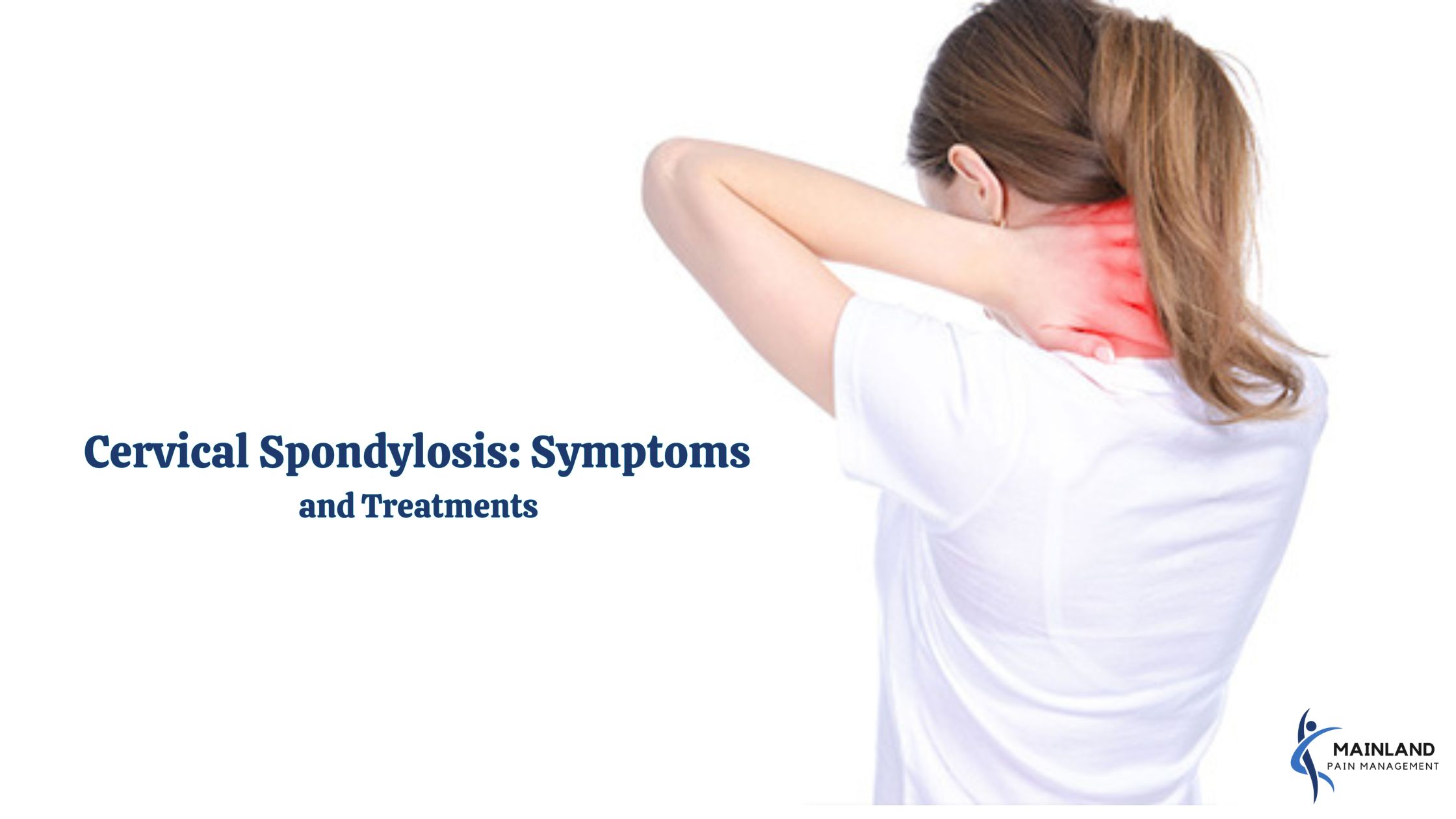Cervical Spondylosis refers to the wear and tear of the spinal disks of the neck, which often occurs due to aging. However, people of any age can be affected by Cervical Spondylosis.
This condition can usually happen due to any neck injury or if one does not maintain an improper posture for a long time. However, in most cases, this disorder is caused by age-related factors, and this disorder can be diagnosed with the help of an X-ray or an MRI. But what are the symptoms which indicate Cervical Spondylosis, and how can the disorder be treated?
To provide readers with a detailed understanding of the symptoms and treatment of Cervical Spondylosis, we have drafted this comprehensive blog. We have taken the insights to create this post from Dr. Dipty Mangla, a renowned pain management physician known for offering the best neck pain treatment in New Jersey at Mainland Pain Management. Let’s get started by learning the symptoms of Cervical Spondylosis.
What are the Symptoms of Cervical Spondylosis?
Below are some of the symptoms of cervical Spondylosis that help to identify the disorder:
- Neck Pain: Degeneration of the bones and disc could lead to neck pain and immobility of movement. It usually happens due to wear and tear of the disc and bones. The individual affected by this disorder is unable to move the neck freely and could feel aching pain during activities such as sleeping on one side while rotating the neck and doing desk jobs for a longer duration.
- Muscle Spasms: Muscle spasms are another sign of this disorder. Narrowed space for the spinal cord and nerve roots can cause pain in the shoulder, back, or neck. In severe conditions, it leads to muscle spasms.
- Dizziness: Dizziness often occurs due to osteoporosis, which often obstructs neck and back movement. This makes it difficult for the affected individual to indulge in normal activities. Dizziness could also happen due to wear and tear due to age.
- Headache: Another common symptom of cervical Spondylosis is headache. Continuous headaches can disturb the daily routine of an individual and it also makes the affected individual irritated.
How is Cervical Spondylosis Treated?
There are several treatments available to treat cervical Spondylosis. Some of the common ones include as below:
- Physical Therapy: Physical therapy helps to lessen the pain caused in the neck and back due to bone tissues. The therapy helps in correcting the posture and eliminates pain.
- Heat and Ice Massage: Massaging with heat and ice helps to relieve pain caused by cervical Spondylosis. However, apart from this, one can consult a pain management specialist who can refer to the other treatment options if needed.
- Medications: Medications for treating pain in several body parts help to lower pain. Anti-inflammatory medicines also help to lower the symptoms of the disease. Additionally, medicines such as muscle relaxants help to lower muscle spasms and back and neck pain.
- Surgery: In severe situations, when cervical spondylosis results in compression of the spinal cord or spinal nerve, a corrective surgery might be performed to ease the pressure of the spinal cord.
If one is experiencing cervical Spondylosis, they can get in touch with a pain management specialist, Dr. Dipty Mangla at Mainland Pain Management, who offers the best chronic pain treatment in New Jersey.
At the center, all the specialists are dedicated to serving patients with the highest-quality and most convenient healthcare.
Visit Mainland Pain Management for more details!



